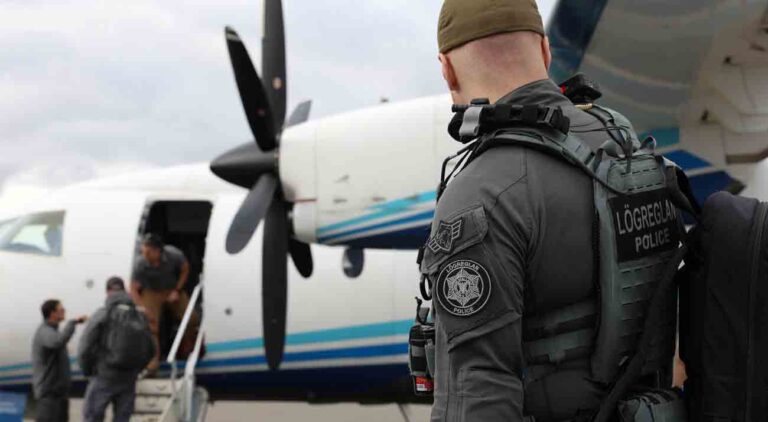DUKE FIELD, Fla. — A team of Reservists from Duke Field, Florida, demonstrated the versatility of the C-146A Wolfhound aircraft while supporting joint and NATO forces during Exercise Northern Viking 2024 in Keflavik, Iceland, Aug. 26 – Sept. 4, 2024.
Members of the 859th Special Operations Squadron, part of the 919th Special Operations Wing, highlighted the squadron’s ability to adapt to varied missions, including collaboration with both military and civilian entities in crisis situations. According to Capt. Jason Brown, an 859th SOS pilot and lead planner, the exercise allowed the aircrew to showcase their skills across multiple domains.
“Not only were we challenged by having to contend with a drastically different environment, living up to its reputation as the land of fire and ice with storms and an active volcano, but we also benefited from working with other U.S. and NATO forces,” Brown said.
“Our primary mission remains SOF-focused, but there will always be a need to work with those who have differing requirements, missions or purposes.”
Northern Viking 2024, led by U.S. Naval Forces Europe and executed by the U.S. Sixth Fleet, involved naval, air, and land forces from NATO allies such as Iceland, Denmark, France, Norway, Poland, and Portugal.
The exercise marked the 859th SOS’s first chance to train alongside Icelandic quick reaction forces, navigating crisis scenarios ranging from volcanic eruptions to humanitarian disasters.
“The greatest challenge we faced initially was figuring out how we would fit into a naval exercise,” Capt. Brown said.
“Our focus was on doing what we do best—moving people and cargo from one airfield to another while being flexible enough to adjust to constantly changing needs.”
Throughout the exercise, Allied forces practiced operations to improve cooperation while adapting to increasingly complex taskings. The 859th SOS played a vital role in several missions, including airlifting an Icelandic Quick Reaction Force and supporting a medical evacuation mission that allowed Navy medics to perform triage aboard the C-146A aircraft.
“The flight with the C-146 aircraft helped us to simulate a fixed-wing transport as well as a simulated longer evacuation to a higher level of care,” said Lieutenant Commander Clyde Martin, U.S. Navy Medical Officer.
“It enhanced our readiness as there are problems within medicine that only occur during transport.”
Brown emphasized the C-146A’s critical role in casualty evacuation, noting that its ability to reach smaller airfields quickly and transport patients over longer distances made it a valuable asset in crisis situations.
“This aircraft is well suited to the casualty evacuation mission as it can reach smaller airfields in a short amount of time, bringing in medical teams and supplies while transporting ambulatory patients along with their medical attendants,” Capt. Brown said.
Original story by Lt. Col. James R. Wilson








